Red-faced Lovebird
Also known as:
Red-headed Lovebird
Also known as:
Red-headed Lovebird
DID YOU KNOW?
The Red-faced Lovebird feeds on insect larvae, as well as seeds and fruit.

Agapornis

pullarius
Size:
15 cm (6 in)
Weight:
43 g (1.5 oz)
Subspecies including nominate:
two: A.p. pullarius, A.p. ugandae
Colour Adult:
A.p. pullarius: Male-green in colour; face orange/red; cobalt-blue lower back and rump; green/yellow upper tail coverts; black underwing coverts; green tail, with lateral tail feathers red at base, banded with black near tips and with yellow tips. Beak coral red. Eye dark brown. Female-orange facial mask; green underwing coverts.
A.p. ugandae: Both adults as in pullarius, but paler blue along lower back and rump.
Colour Juvenile:
A.p. pullarius: Facial mask less extensive and orange/yellow; black underwing coverts in male, green in female. Beak red/brown with black at base of upper mandible.
Call:
Calls are described as weak and high-pitched; twittering and trilling. Also abrupt, whistling notes.
More Information:
Content Sources:
CITES
BirdLife International
Cornell Lab of Ornithology/Birds of the World
Parrots: A Guide to Parrots of the World, Juniper and Parr, 1998
Parrots of the World, Forshaw and Cooper, 1989. 2010 edition
Parrots of the World, Forshaw, 2006.
Lexicon of Parrots, Thomas Arndt.
Parrots in Aviculture, Low, 1992.
Parrots: Their Care and Breeding, Low, 1986.
Captive Status:
Common until 1960s, since then seldom seen.
Longevity:
—
Housing:
Enclosure or aviary, indoors or outdoors in warm climates, minimum length 1.2 m (4 ft).
Diet:
Small seed mix such as: canary, millet and oats, soaked, with a little hemp in cold weather; apple; green leaves such as: Swiss chard, lettuce, sowthistle, dandelion, chickweed; willow catkins; spray millet; rearing food made from: hard boiled egg, wholegrain bread and carrot, all ground to crumbly consistency; soaked figs for newly acquired birds.
Enrichment:
Provide bird-safe, unsprayed flowering, fir, pine, willow, elder or saskatoon branches and various sized perches. Provide wooden block or vegetable tanned leather toys, foraging/puzzle toys, push and pull toys, noise makers, ladders, swings and ropes.
Nest Box Size:
Diagonal nest box 25 cm x 10 cm x 20 cm (10 x 4 x 8 in).
Clutch Size:
5
Fledging Age:
7 weeks
Hatch Weight:
—
Peak Weight:
—
Weaning Weight:
—
World Population:
Unknown and reported as uncommon, decreasing.
IUCN Red List Status:
Least Concern
CITES Listing:
Appendix II
Threat Summary:
Generally uncommon but locally abundant in Ethiopia. Significant numbers are trapped each year for trade. Uncommon or rare in Liberia, Ghana and Benin and in Sierra Leone, not uncommon in N woodlands but less common further south. This species is considered to have a medium dependency on forest habitat, and tree cover is estimated to have declined by 5.4% within its mapped range over the past 10 years. Therefore, it is tentatively suspected that this may have led to a 1-19% decline in the species’ population over the same period.
Range:
A.p. pullarius: Western and central Africa east to S Sudan and W Uganda; also occurs on Sao Tome Island in Gulf of Guinea.
A.p. ugandae: East-central Africa.
Habitat:
Found up to 1500 m (4920 ft), locally 2000 m (6560 ft) in moist lowland savanna, patches of heavier forest within savanna, riverine woodland and scrub and more open habitats, including abandoned plantations, cultivated land and pasture.
Wild Diet:
Diet includes grass seeds, fruit such as guava, some cultivated crops. Birds in captivity have been reported to take insect larvae.
Ecology and Behaviour:
Seen in fast-flying flocks of up to 30 birds. Breaks off into pairs while breeding. Returns at night from a day of foraging at great distance to communal roosts. Nest is constructed by female and is composed of seed husks, shredded grasses leaves and possibly hardened excrement, all inside arboreal ant or termite termitaria.
Clutch and Egg Size:
5 rounded eggs, 21.5 x 17.0 mm
Breeding Season:
April-October in different countries; nests in arboreal ant and termite mounds.
Related Links:
—
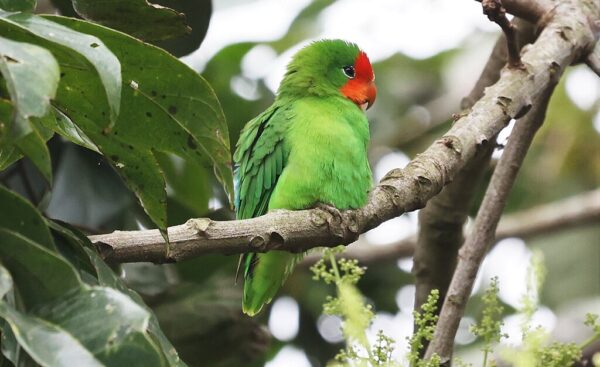
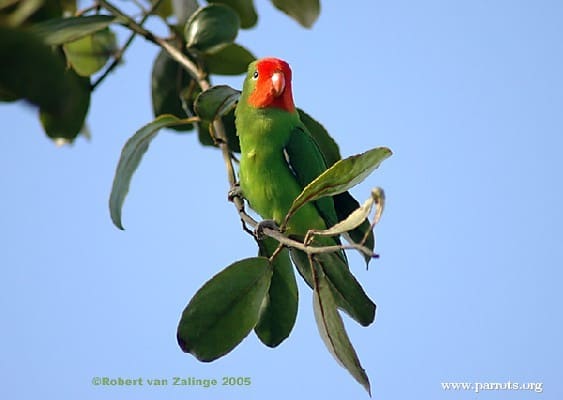
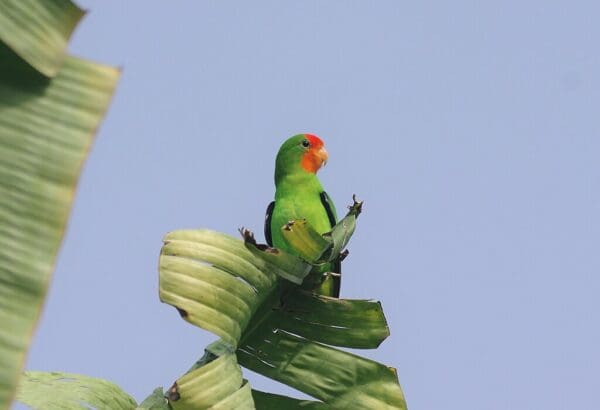
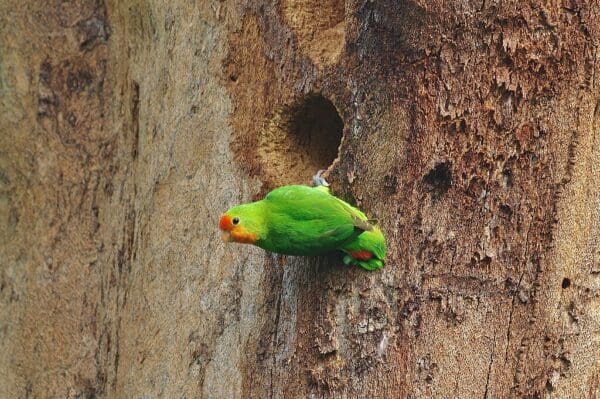
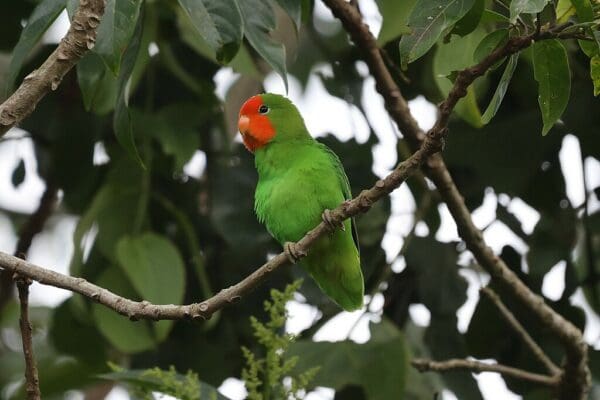
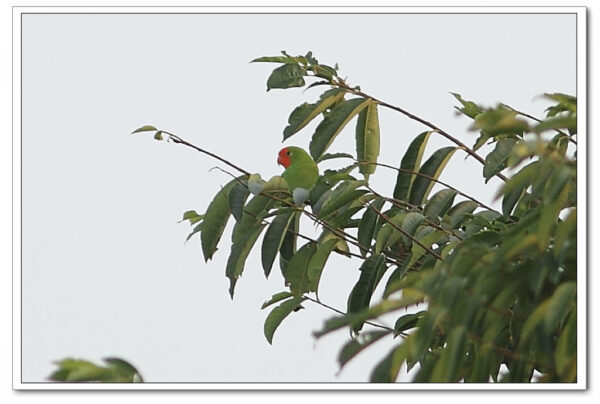
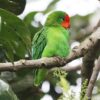
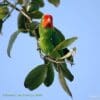
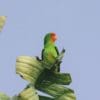
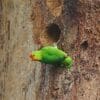
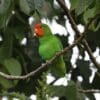
![© Ross Tsai [CC BY-SA 2.0] via Flickr A wild Red-faced Lovebird perches in a leafy tree](https://parrots.org/wp-content/uploads/1990/10/Red-faced-Lovebird-lg-Ross-Tsai-100x100.jpg)